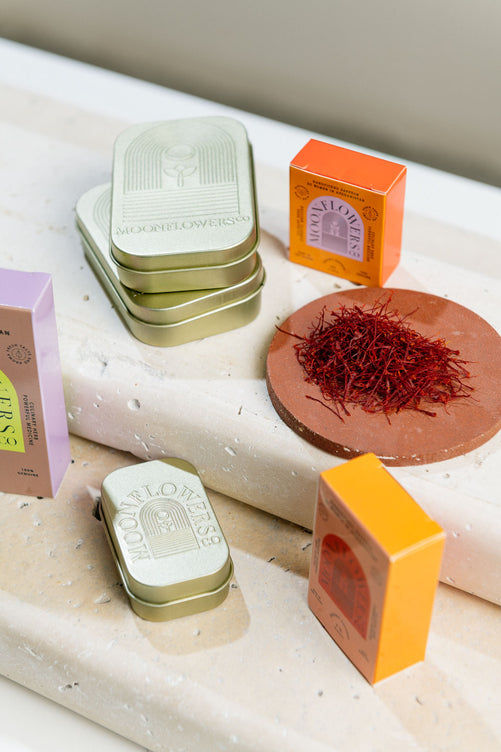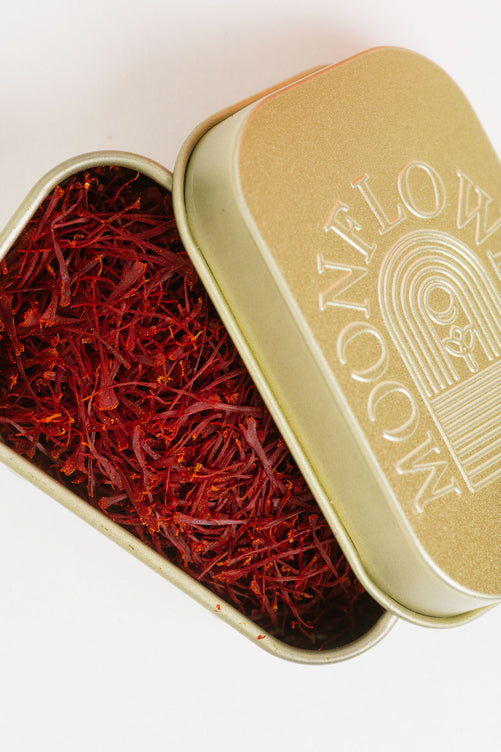journal
How does saffron grow?

Afghanistan’s saffron received the ‘World’s Best’ saffron award for the third time in a row from the International Taste and Quality Institute in the Belgian capital of Brussels. Our saffron is sourced from a small family owned and run farm in Herat, Afghanistan. Their practice from planting the corms to harvesting is done with a lot of care, to ensure premium quality saffron stigmas. Our premium-grade saffron is produced organically, without the use of genetically modified corms, synthetic pesticides or fertilizers.
How does Saffron grow?
The most basic condition for commercial saffron production is fertile soil. The second major factor is the climate. It necessitates a long photoperiod and a dry, moist soil. Saffron is grown primarily in sunken and dry places with elevations ranging from 1500 to 2500 metres above sea level. It requires a 12-hour photoperiod, which has several advantages but also slows down the flowering process.
One of the most important aspects of saffron growing is the soil. It thrives on loamy, sandy, and calcareous soils. A gravelly soil is also excellent for saffron farming, however a heavy, clayey soil is not. Saffron grows best on acidic soil. It thrives well when pH of soil is around 5.5 to 8.5.

Saffron requires less water than other spices. The soil should be slightly damp but not completely dry. Irrigation is done on a weekly basis and 283 m cubic per acre of water must be delivered during the cultivation period.
Any crop must be planted at a specific time. We don't receive the expected yield since we don't plant seeds at the proper time. As a result, make sure to plant the seeds on the fields at the appointed time. The greatest months to harvest saffron are July and August, with mid-July being the best. When applying the saffron croms, make a 6 - 7 centimetre pit for the croms to go into, and leave about 10 cm between the two corms. The croms will flourish as a result, and plenty of pollen will be produced.
Using 50 bulbs, this will create a saffron bed about 2 ft. by 5 ft. As a bonus, you may plant this bed with summer annuals, while the saffron is lying in wait beneath the mulch for its autumn growing season.

Is saffron easy to grow?
Before the saffron corms can be planted, the farmers prepare the land by deep ploughing it, leveling it, removing weeds and other materials, and making small plots. Soil preparation is practiced in autumn or winter. In Afghanistan, the farmers use the ridge planting method to plant the saffron corms. This method provides better protection against high temperatures as well as pests and diseases. The corm is prevented from being soaked in water.

How fast does saffron grow?
The saffron corms are planted generally from April through June, which leads to the best production. Saffron does not require a lot of nutrients compared to other agricultural plants. Saffron doesn’t need much irrigation. The growth of saffron starts after the first irrigation, usually around September. Water is then necessary to support the flowering of the saffron corm.
The flowering stage of the saffron starts in October and continues for three weeks. Each flower lives for only 48 hours, which is why it is key to ensure harvest within this short period of time. The saffron flowers should be picked early morning, as soon as they open. It is important for the saffron pickers to pick the flowers in a fast pace, as the wilting of the flowers makes the post-harvest process difficult. The optimal harvest time is in the very early morning, before there is full sun.








